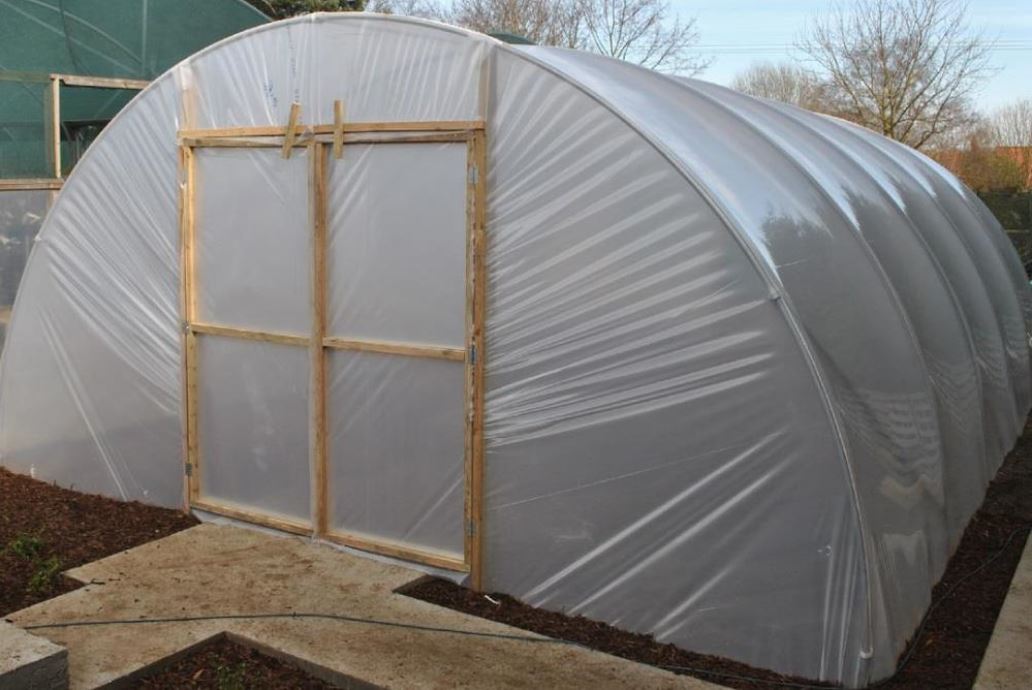What can I grow in a polytunnel?
21st Jun 2020
A polytunnel is a fantastic asset for any keen gardener to have. Not least because it opens up so many possibilities for growing plants and vegetables, all year round. No matter the season, no matter the weather, you can have a fresh supply of vegetables that came straight from your garden on to your plate. Grow fruits for jam making and baking. Or, of course, cultivate and amazing array of plants from seed to maturity.
In short, a polytunnel will help you get the most from your garden and provide a wonderful sanctuary in which you can potter away to your heart’s content. And, with polytunnels coming in all sizes from just 10x12’ most of us will have the space for one in our garden.
What can I grow in a polytunnel?
So, what are gardeners just like you growing in their polytunnel? Well, all sorts -- the scope of what it’s possible to grow is vast. There are some common plants that people grow, however. These are items that you’ll usually find on the side of a dinner plate. You’ll be able to grow a lot of cabbage, onion, potatoes, carrots, and lettuce, for example. If you’re looking for ingredients to include in a dessert (rather than a main meal), then you’re also in luck -- in gardens up and down the UK, people with polytunnels are growing strawberries, melons, peaches, and apples.

It’s not just fruits and vegetables that you can grow, either. There’s plenty of scope when it comes to herbs, too—Rosemary, sage, thyme, and oregano work especially well in polytunnels. Of course, all the options we’ve listed here really are just a beginning. Anything is possible and the extra warmth and protection provided by your polytunnel will increase the yield from your crops and plants many times over.
Crops all year round
While a polytunnel will allow you to grow plants and crops all year round, there are certain times of year that’ll be better suited for some types rather than others.
Many people spend long days in the garden during the summer months, so what should you be growing then? You’ll get great results from cucumber, tomatoes and peppers. Just watch them grow. French beans and Chinese cabbage are also fantastic to plant at this time of year.
One of the reasons you’ll have bought a polytunnel is that you can do away with the harshness of winter causing havoc with your crops. A polytunnel isn’t going to keep winter away forever, but it will delay it -- it’s effectively used to extend the life of the season. Carrots, kale, turnips, radish, and garlic can all be planted even as winter is approaching.
Of course, the plants that you can sow during spring and autumn are extensive, since they’re the optimal growing times.
Tips for successful growing in a polytunnel
Looking to get the most bang for your buck from your polytunnel? Then check out the following tips or read our article on What are the best garden polytunnels.
- Make sure the ground is as level as possible when you build your polytunnel.
- Think about where you’re going to site your polytunnel. A nearby outside tap will make things easier when it comes to watering your plants.
- Invest in high-quality plants. You’ll get far more satisfying results if you source your plants from reputable growers.
- Maintain your polytunnel. A little tear can undo all the benefits of having one in the first place. If you spot a tear that can’t be repaired a replacement polytunnel cover can be easily fitted.
We have a huge range of polytunnels available for keen gardeners and professional growers. You can see the full range here or contact us on sales@directplants.co.uk for further information.


